In the world of haute horlogerie, few names command the respect and reverence that Vacheron Constantin has earned over nearly three centuries of uninterrupted excellence. Founded in 1755 by Jean-Marc Vacheron in Geneva, this Swiss manufacture holds the distinguished title of being the world’s oldest continuously operating watch manufacturer—a legacy that spans 270 years of innovation, craftsmanship, and unwavering dedication to horological artistry. As one third of the prestigious “Holy Trinity” of Swiss watchmaking alongside Patek Philippe and Audemars Piguet, Vacheron Constantin represents more than just timekeeping; it embodies centuries of Swiss heritage, technical mastery, and cultural prestige that continues to captivate collectors and connoisseurs worldwide. The maison’s remarkable journey from a small Geneva workshop to becoming a billion-dollar luxury powerhouse demonstrates how tradition and innovation can harmoniously coexist, creating timepieces that serve as both functional instruments and works of art for discerning enthusiasts in the American luxury market and beyond.
Founding and Legacy: The Birth of Swiss Horological Excellence
The story of Vacheron Constantin begins on September 17, 1755, when 24-year-old master watchmaker Jean-Marc Vacheron signed a contract with his first apprentice, Esaïe Jean François Hetier. This seemingly simple apprenticeship agreement, certified by a notary and preserved in the Geneva State archives, represents the oldest known mention of the founder and serves as the company’s official birth certificate. The significance of this date extends beyond mere documentation—it established a tradition of knowledge transfer and skill preservation that would become the cornerstone of Vacheron Constantin’s enduring success.
Jean-Marc Vacheron, the son of a weaver, demonstrated exceptional talent in the watchmaking craft and maintained close friendships with leading Enlightenment philosophers Jean-Jacques Rousseau and Voltaire, reflecting the intellectual climate of 18th-century Geneva. During his 30-year tenure at the workbench, Vacheron not only crafted timepieces but also laid the foundation for what would become one of the most respected names in horology. His commitment to excellence and innovation manifested in several pioneering achievements, including creating one of the world’s first horological complications in 1770 and designing the first engine-turned dials in 1779.
The transition of leadership to Jean-Marc’s son Abraham Vacheron in 1785 marked a crucial period in the company’s development. Abraham successfully navigated the turbulent political landscape of the French Revolution and the occupation of Geneva, ensuring the survival of the family business during one of Europe’s most challenging historical periods. Under his stewardship, the company began producing some of the world’s first pocket watch complications, establishing a reputation for technical innovation that would define the brand for centuries to come.
The transformation into Vacheron & Constantin occurred in 1819 when Jacques-Barthélémi Vacheron, the founder’s grandson, partnered with François Constantin, an experienced businessman and traveler. This strategic alliance brought not only the current name but also the company’s enduring motto: “Faire mieux si possible, ce qui est toujours possible” (Do better if possible, and that is always possible). Constantin’s expertise in international markets proved invaluable, as he traveled extensively throughout Europe and North America, introducing Vacheron Constantin timepieces to an expanding global clientele. His innovative approach included marketing jewelry alongside watches, creating what he branded as “Bijouterie de Genève” to entice customers with familiar luxury goods before introducing them to the sophisticated world of Swiss watchmaking.
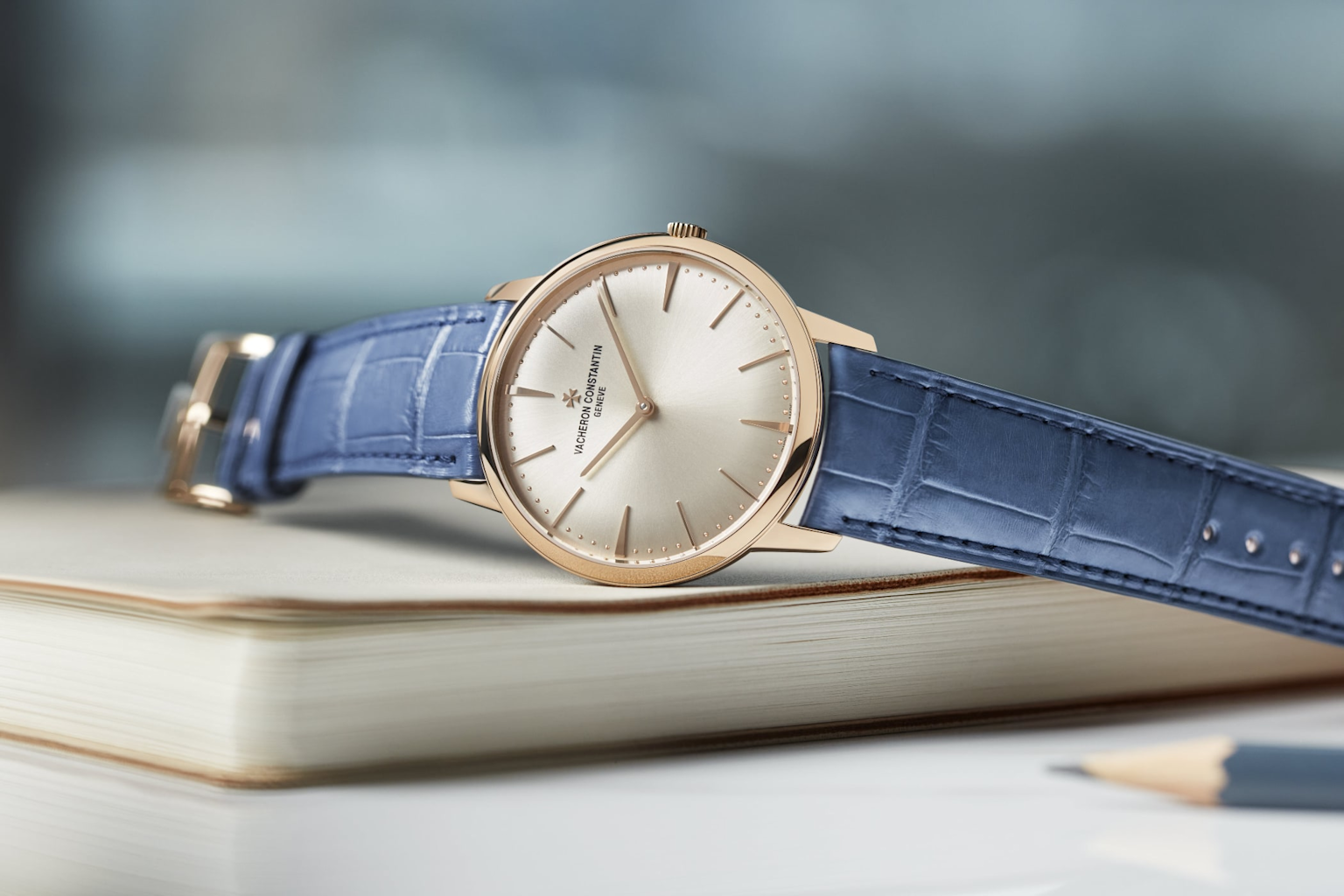
Craftsmanship and Innovations: Masters of Mechanical Artistry
Vacheron Constantin’s reputation for exceptional craftsmanship stems from its unwavering commitment to traditional Swiss watchmaking techniques combined with continuous innovation and technical advancement. The manufacture’s approach to watchmaking encompasses every aspect of horological creation, from movement development and case finishing to dial decoration and complications engineering. This comprehensive mastery of the watchmaking arts has positioned Vacheron Constantin as one of the few manufactures capable of creating entirely in-house timepieces that meet the highest standards of Swiss horology.
The company’s dedication to innovation became particularly evident with the hiring of Georges-Auguste Leschot in 1833, whose inventions revolutionized not only Vacheron Constantin but the entire watchmaking industry. Leschot’s adaptation of the pantograph to watchmaking in 1839 enabled the standardized manufacture and scaling of movement parts and components, making possible uniform quality in series production and the exchangeability of parts. This breakthrough earned him the prestigious Prix de la Rive from the Arts Society in 1844, recognizing his contribution as “the discovery of the most value to the Genevese industry”. Leschot’s innovations laid the groundwork for modern watchmaking manufacturing while maintaining the hand-finished quality that distinguishes Vacheron Constantin timepieces.
The manufacture’s commitment to pushing the boundaries of mechanical complexity reached unprecedented heights with the development of ultra-thin movements and grand complications. The legendary Calibre 1003, introduced in 1955 to commemorate the company’s bicentenary, achieved a remarkable thickness of just 1.64mm, making it one of the world’s thinnest mechanical hand-wound movements—a record that remains impressive even by today’s standards. This technical achievement demonstrated Vacheron Constantin’s ability to miniaturize complex mechanical systems without compromising reliability or precision.
The art of skeletonization represents another area where Vacheron Constantin excels, requiring extraordinary skill to hollow out movement components through openwork while maintaining their structural integrity and reliability. This technique, considered a complication in its own right, demands years of training and exceptional expertise that only a select few watchmaking artisans have mastered. The manufacture’s capability to create skeletonized calibres as complex as perpetual calendars and ultra-thin movements showcases the depth of technical knowledge and craftsmanship traditions that define the brand.
Vacheron Constantin’s mastery of decorative arts extends beyond movement finishing to include specialized crafts such as hand engraving, enameling, and gem-setting. The maison maintains an in-house team of artisans who preserve and advance these traditional métiers d’art, ensuring that each timepiece represents not only mechanical excellence but also artistic achievement. This comprehensive approach to luxury watchmaking, encompassing both technical innovation and decorative arts, distinguishes Vacheron Constantin from many competitors and reinforces its position within the Holy Trinity of Swiss watchmaking.
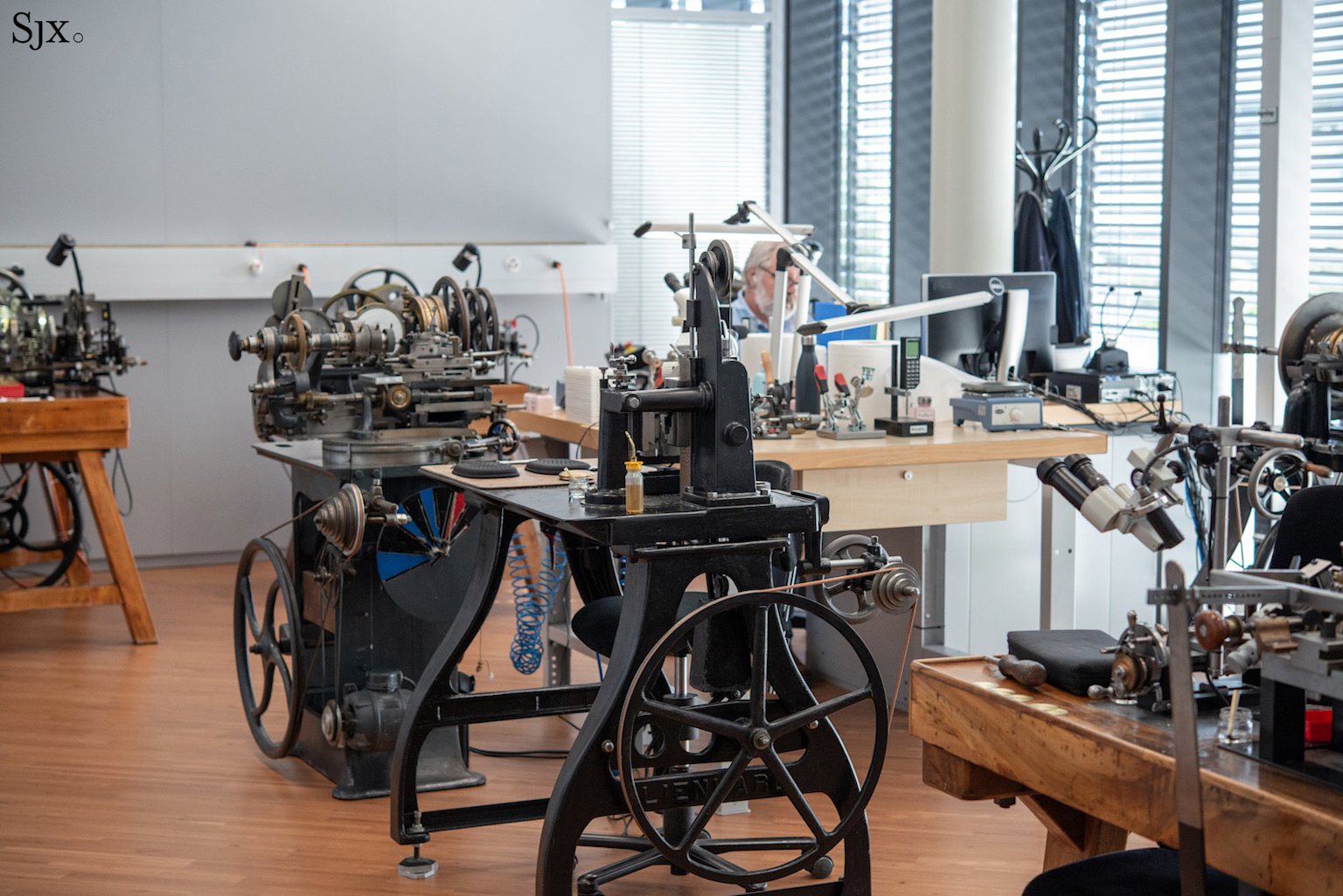
Iconic Collections: Timeless Designs for Every Luxury Enthusiast
Vacheron Constantin’s current collection architecture reflects nearly three centuries of horological expertise, with each line targeting specific segments of the luxury watch market while maintaining the brand’s signature quality and finishing standards. The diversity of these collections demonstrates the manufacture’s ability to create timepieces that appeal to different aesthetic preferences and functional requirements, from classical dress watches to contemporary sports models.
The Patrimony collection embodies Vacheron Constantin’s mastery of classical watchmaking aesthetics, drawing inspiration from 1950s models, particularly the Reference 6179 from 1957. Characterized by circular perfection and a quest for essentials, Patrimony timepieces feature slender cases, slightly convex dials with pearl minute tracks, and the legendary ultra-thin movements that have become synonymous with the brand. The collection’s entry-level Manual Winding models in 40mm rose or white gold cases start at $22,100, powered by the in-house Caliber 1400 with a 38-hour power reserve. The Patrimony line’s deliberately minimalist approach creates a beautiful balance between taut lines and curves, making these timepieces ideal for collectors who appreciate understated elegance and classical proportions.
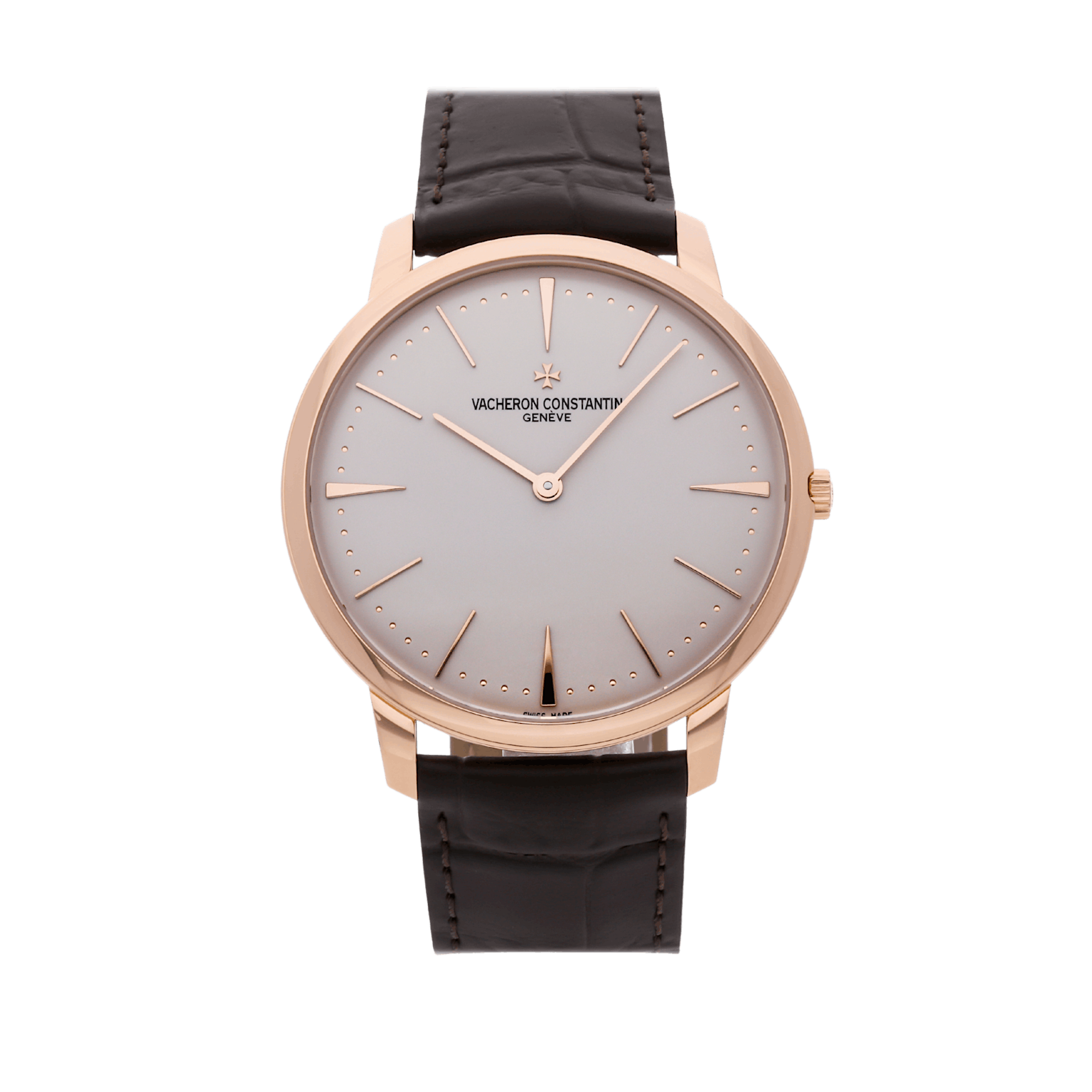
The Overseas collection represents Vacheron Constantin’s successful entry into the luxury sports watch segment, launched in 1996 and significantly revamped in 2016. Drawing inspiration from the earlier 222 model from 1977, the Overseas features the distinctive six-sided bezel and integrated bracelet that have become hallmarks of the collection. Recent auction results demonstrate the growing collector interest in Overseas models, with complicated pieces achieving substantial premiums over retail prices. The collection’s versatility stems from its tool-free strap changing system and robust automatic movements that meet Geneva Seal standards, making these timepieces suitable for both formal occasions and active lifestyles. Entry-level steel models begin around $24,840, while precious metal and complicated variants can exceed $200,000 at auction.
The Historiques collection serves as a bridge between Vacheron Constantin’s rich heritage and contemporary collectors’ desires for vintage-inspired designs. This carefully curated line provides contemporary reinterpretations of iconic models from the manufacture’s prestigious past, including the American 1921 with its diagonal dial reading, the Cornes de Vache 1955 chronograph with distinctive horn-shaped lugs, and the recently revived 222. The rarity of Historiques pieces—with fewer than 1,000 original 222 models produced over seven years—has made them increasingly sought after by collectors. Recent auction results show vintage 222 models achieving record prices, with stainless steel examples selling for over CHF 189,000, reflecting growing appreciation for these unique designs.
The Traditionnelle collection represents the pinnacle of Vacheron Constantin’s haute horlogerie capabilities, featuring classical complications and exceptional hand-finishing in precious metal cases exclusively. These timepieces showcase the manufacture’s mastery of complex mechanisms, including perpetual calendars, minute repeaters, and tourbillons, all certified with the Geneva Seal. The collection appeals to serious horological enthusiasts who appreciate the technical artistry and traditional craftsmanship that define Swiss haute horlogerie. Entry-level Traditionnelle models begin around $31,900, reflecting the extensive hand-work and precious materials required for their creation.
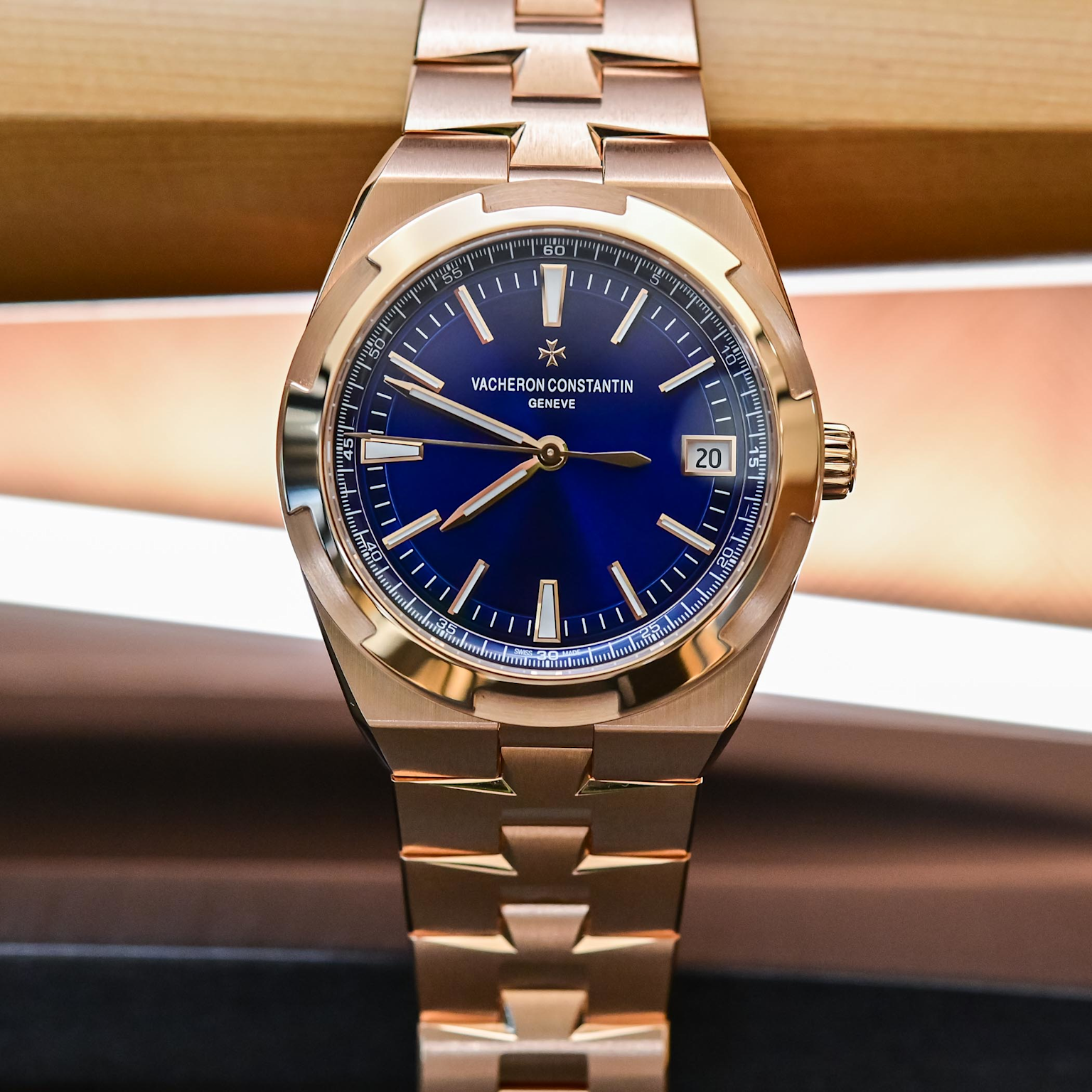
Haute Horlogerie Milestones: Pushing the Boundaries of Mechanical Complexity
Vacheron Constantin’s pursuit of horological excellence reached its zenith with the creation of some of the world’s most complicated mechanical timepieces, establishing benchmarks that have redefined the possibilities of traditional watchmaking. These extraordinary achievements demonstrate not only technical mastery but also the manufacture’s commitment to preserving and advancing the art of mechanical timekeeping in an increasingly digital world.
The Reference 57260, unveiled in 2015 to commemorate Vacheron Constantin’s 260th anniversary, represents perhaps the most ambitious horological project ever undertaken by the manufacture. This unique pocket watch, commissioned by an anonymous American collector and requiring eight years of development by three master watchmakers, features an unprecedented 57 complications housed within a case measuring 98mm in diameter and weighing approximately 2 pounds. The timepiece incorporates entirely new complications that had never before existed, including a Hebrew perpetual calendar and a split-seconds chronograph capable of timing multiple events simultaneously. Among its 57 functions are a triple-axis tourbillon, Westminster chime with five gongs and five hammers, multiple calendar systems, astronomical displays, and even a sky chart showing constellations visible from the owner’s city.
The technical achievement of Reference 57260 extends beyond mere complexity to encompass genuine innovation in mechanical engineering. The watch incorporates ten new patents and features complications that required calculation, design, and development from scratch, necessitating the creation of an entirely new movement with over 2,800 components. The astronomical functions measure celestial object positions, track seasonal changes, and display sunset and sunrise times, while the chiming mechanism can operate in multiple modes including silent periods between 10 PM and 8 AM. This extraordinary timepiece, estimated at $8 million, demonstrates how modern Swiss watchmaking can push traditional boundaries while honoring centuries-old craftsmanship principles.
Building upon this foundation of mechanical complexity, Vacheron Constantin continued to break records with subsequent creations. In 2024, the manufacture unveiled Les Cabinotiers – The Berkley Grand Complication, a pocket watch featuring 63 complications and 2,877 components, surpassing the previous record set by Reference 57260. The main innovation of this piece lies in its traditional Chinese perpetual calendar, mechanically programmed through the year 2200—a feat of horological genius given the complex and irregular nature of the Chinese calendar system.
Most recently, in 2025, Vacheron Constantin introduced the Les Cabinotiers Solaria Ultra Grand Complication, setting a new record for the world’s most complicated wristwatch with 41 complications and 1,521 components. This remarkable achievement required eight years of research and development, resulting in 13 patent applications and the creation of the miniaturized Calibre 3655. The watch fits comfortably within a 45mm white gold case measuring just 14.99mm thick, demonstrating extraordinary miniaturization capabilities. The Solaria features five rare astronomical functions brought together for the first time in a wristwatch, including real-time sun position indication and celestial map displays, along with an innovative Westminster minute-repeater with four gongs and four hammers.
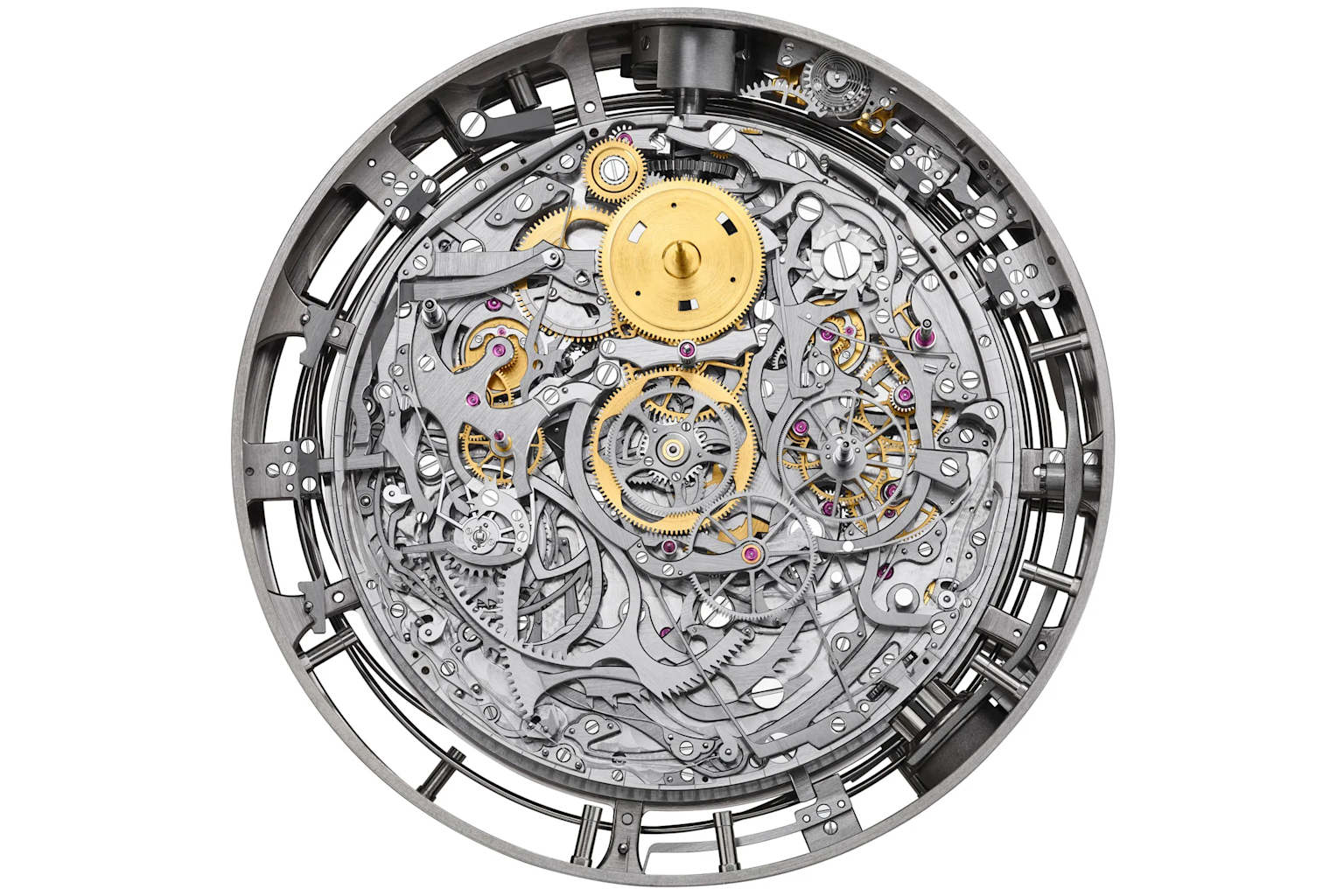
Branding and Cultural Prestige: The Maltese Cross Legacy
The cultural significance and prestige of Vacheron Constantin extends far beyond technical achievements to encompass a carefully cultivated brand identity that has resonated with royalty, celebrities, and discerning collectors for centuries. The manufacture’s association with historical figures and contemporary influencers reflects its enduring appeal across different eras and social spheres, while its commitment to traditional values and exceptional quality has maintained its position among the world’s most respected luxury brands.
The Maltese Cross, officially adopted as Vacheron Constantin’s emblem in 1880, serves as the most recognizable symbol of the brand’s heritage and quality standards. This distinctive logo draws inspiration from a component of the barrel that had a cross-shaped design and was used to limit mainspring tension, symbolizing the brand’s commitment to precision and reliability. The Maltese Cross, registered with the Swiss Institute of Intellectual Property in Bern, appears on every Vacheron Constantin timepiece and represents the manufacture’s uncompromising approach to quality and craftsmanship. The symbol’s historical significance extends beyond mere branding to embody the values of excellence, tradition, and innovation that have defined the company for over two centuries.
Vacheron Constantin’s commitment to the Geneva Seal (Poinçon de Genève) represents another crucial aspect of its cultural prestige and quality assurance. All Vacheron Constantin timepieces bearing mechanical movements are certified with this prestigious hallmark, which guarantees the highest standards of finishing, assembly, and reliability. The Geneva Seal certification process involves rigorous testing and inspection of movements, ensuring that every component meets exceptional quality criteria that exceed industry standards. This commitment to certification demonstrates the manufacture’s confidence in its products and provides customers with assurance of authenticity and quality.
The brand’s position within the “Holy Trinity” of Swiss watchmaking, alongside Patek Philippe and Audemars Piguet, reflects its recognition among industry experts and collectors as representing the pinnacle of horological achievement. This prestigious designation, established decades ago, acknowledges these three manufacturers’ contributions to advancing the art and science of mechanical timekeeping. While each member of the Holy Trinity has distinct characteristics—Patek Philippe known for grand complications and collectibility, Audemars Piguet for sports luxury innovation, and Vacheron Constantin for continuous operation and Geneva Seal certification—all three represent the highest levels of craftsmanship and exclusivity.
Notable wearers throughout history have included Napoleon Bonaparte, Marlon Brando, and John Mayer, reflecting the brand’s appeal across different fields and generations. Contemporary partnerships and cultural initiatives, such as the recent collaboration with The Metropolitan Museum of Art for an 18-month artisan residency program, demonstrate Vacheron Constantin’s commitment to preserving and celebrating traditional crafts beyond watchmaking. These partnerships reflect the brand’s understanding that luxury extends beyond products to encompass cultural experiences and artistic appreciation.
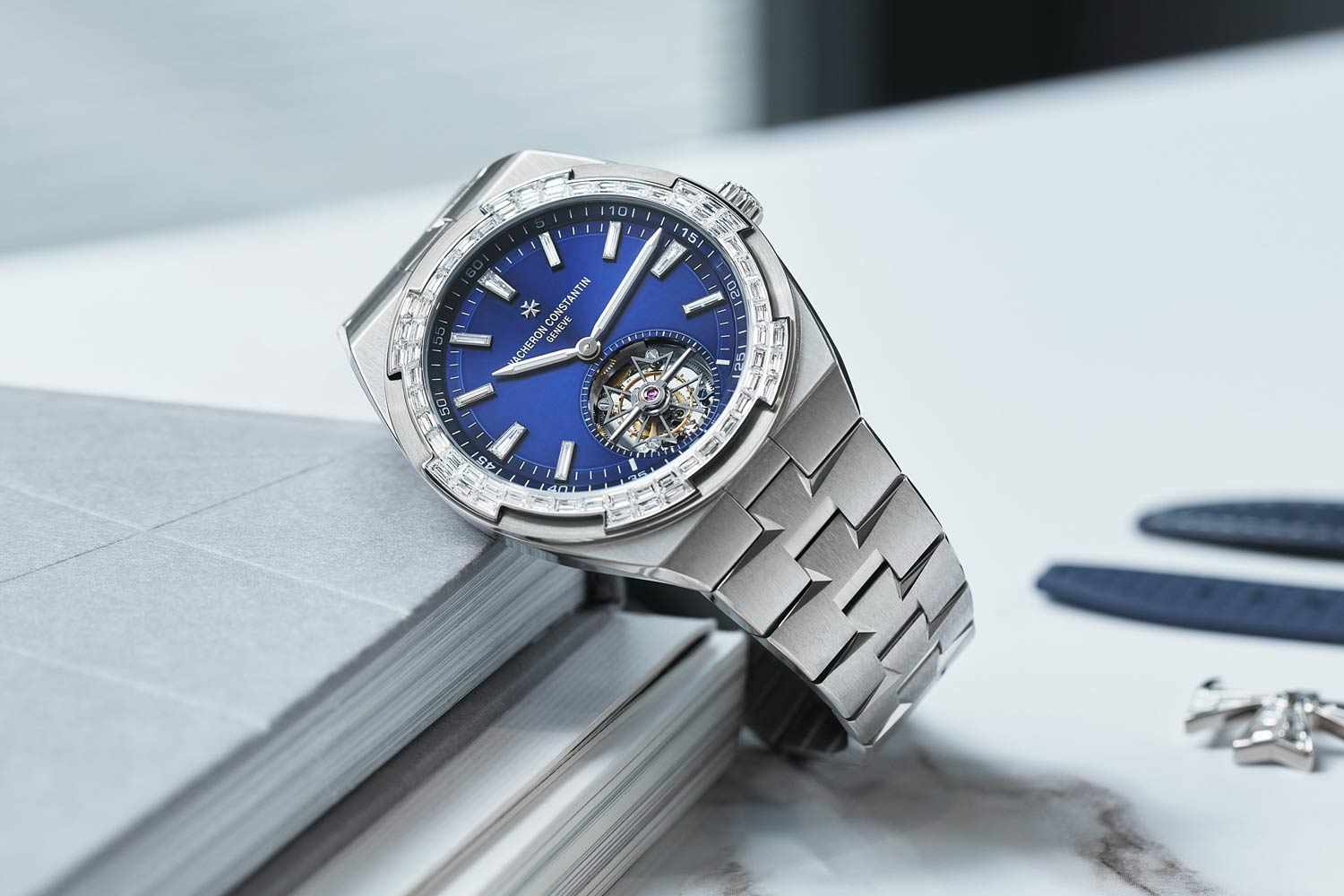
Collectibility and Market Trends: Investment Potential in American Luxury Markets
The collectibility and market performance of Vacheron Constantin timepieces in the United States and global luxury markets demonstrate the brand’s strong investment potential and growing recognition among discerning collectors. Recent auction results and market analysis reveal increasing demand for certain collections and models, particularly those with historical significance, technical complexity, or limited production numbers.
Auction Performance and Record Sales illustrate the growing collector interest in Vacheron Constantin timepieces across various price segments. The brand’s auction history includes some remarkable achievements, most notably King Fuad I of Egypt’s pocket watch No. 402833 from 1929, which fetched $2.77 million at a Geneva auction in 2005, ranking among the most expensive watches ever sold. More recent results show strong performance across different collections, with the Overseas line experiencing particularly robust growth in collector interest and market values.
The Overseas collection has emerged as a significant driver of market appreciation, with vintage 222 models—the collection’s predecessor—achieving record auction prices in recent years. A stainless steel 222 sold for CHF 157,500 in November 2021, representing five times its estimated value and exceeding comparable Royal Oak and Nautilus results from the same sale. Subsequently, in 2022, yellow gold and steel 222 examples sold for CHF 163,800 and CHF 189,000 respectively, demonstrating sustained collector enthusiasm. The rarity of original 222 production—fewer than 1,000 pieces over seven years with only about 500 in steel—contributes significantly to their collectibility.
Contemporary Overseas models continue this strong market performance, with complicated pieces commanding substantial premiums at auction. The most expensive Vacheron Constantin Overseas ever sold was a Perpetual Calendar Ultra-Thin Skeleton Reference 4300V/120R-B547, which achieved CHF 239,400 in May 2022. This result reflects collector appreciation for the combination of sports watch aesthetics with haute horlogerie complications, a formula that increasingly resonates with modern luxury consumers. Current market prices for steel Overseas models range from $20,000 to $30,000, while precious metal and complicated variants can command $30,000 to $70,000 or more.
Market Position Within the Holy Trinity reveals Vacheron Constantin’s competitive advantages in terms of accessibility and value proposition. Among the Big Three, Vacheron Constantin offers the most affordable entry point into world-class Swiss watchmaking, with the FiftySix collection starting around $13,200 compared to higher entry prices for comparable Patek Philippe and Audemars Piguet models. This accessibility, combined with the brand’s heritage and quality standards, makes Vacheron Constantin particularly attractive to collectors entering the luxury watch market or seeking to diversify their horological investments.
The brand’s financial performance supports this market optimism, with Vacheron Constantin achieving $1 billion CHF in revenue during 2024, representing 8% growth that exceeded broader market performance. This growth reflects increasing recognition of the brand’s value proposition among luxury consumers, particularly in markets like the United States where appreciation for Swiss watchmaking heritage continues to expand. The manufacture’s limited annual production of approximately 20,000 pieces ensures exclusivity while meeting growing demand from collectors and enthusiasts.

Future Outlook: Sustainability and Innovation for the Next Generation
Vacheron Constantin’s strategic vision for the future demonstrates how traditional Swiss watchmaking can embrace modern values while preserving centuries-old craftsmanship principles. The manufacture’s approach to sustainability, technological innovation, and cultural engagement reflects a comprehensive understanding of evolving luxury consumer expectations and global environmental responsibilities.
Sustainability Initiatives and Environmental Responsibility represent core components of Vacheron Constantin’s future strategy, addressing growing consumer demand for environmentally conscious luxury goods. The company has achieved significant milestones in this area, including Responsible Jewellery Council (RJC) membership and COP certification since 2012, demonstrating long-term commitment to ethical practices. The manufacture has implemented practical changes such as complete PVC phase-out since December 2022 in both products and packaging, while achieving over 97% renewable electricity usage worldwide.
A fundamental aspect of Vacheron Constantin’s sustainability approach involves the longevity and repairability of its timepieces. The company’s commitment that 100% of watches produced since 1755 can be repaired in their workshops represents a remarkable achievement in product lifecycle management, contrasting sharply with planned obsolescence strategies common in other industries. This philosophy extends to an extended eight-year warranty on new watches, reflecting confidence in product quality and commitment to long-term customer relationships. Such policies align with growing consumer preferences for durable luxury goods that represent lifetime investments rather than temporary acquisitions.
Innovation and Technological Advancement continue to drive Vacheron Constantin’s product development while respecting traditional manufacturing principles. The recent Les Cabinotiers Solaria achievement demonstrates how artificial intelligence and advanced manufacturing techniques can enhance precision in microscopic component production, enabling tolerances of a tenth of a millimeter. These technological capabilities allow the manufacture to create increasingly complex timepieces while maintaining the hand-finished quality that defines Swiss haute horlogerie.
The company’s approach to innovation extends beyond mechanical complications to encompass materials science and manufacturing processes. Contemporary trends in luxury watchmaking include expanded use of titanium and proprietary alloys, areas where Vacheron Constantin continues to invest in research and development. The brand’s commitment to sustainable materials aligns with broader industry movements toward recycled metals, bio-based straps, and environmentally responsible production methods.
Cultural Engagement and Next-Generation Appeal reflect Vacheron Constantin’s understanding that luxury brands must cultivate relationships with emerging collectors while honoring traditional values. The partnership with The Metropolitan Museum of Art for an 18-month artisan residency program exemplifies this approach, bringing together contemporary artists with traditional craft techniques to create new forms of cultural expression. Such initiatives demonstrate how heritage brands can remain relevant to younger audiences while preserving artisanal traditions.
The manufacture’s “One of Not Many” campaign series, which has highlighted individuals who reflect the company’s values since 2018, demonstrates engagement with contemporary cultural issues including climate change and environmental conservation. Recent campaigns featuring artists documenting Arctic landscape changes illustrate how Vacheron Constantin connects its precision timepieces with broader themes of environmental awareness and social responsibility. These marketing approaches resonate with luxury consumers who increasingly expect brands to demonstrate values beyond product excellence.
According to Heritage and Style Director Christian Selmoni, Vacheron Constantin’s long-term creation philosophy remains “incompatible with industrial growth,” emphasizing the importance of maintaining artisanal production methods and quality standards. This approach positions the brand to continue serving the haute horlogerie market while appealing to collectors who value exclusivity and craftsmanship over mass production. The company’s integrated manufacture capabilities, including in-house movement production and specialized artisan techniques, provide a sustainable foundation for future growth within these quality parameters.
Conclusion
Vacheron Constantin’s remarkable 270-year journey from Jean-Marc Vacheron’s modest Geneva workshop to becoming the world’s oldest continuously operating watch manufacturer represents an extraordinary achievement in luxury business longevity and Swiss cultural heritage. The manufacture’s unwavering commitment to excellence, innovation, and traditional craftsmanship has not only survived multiple centuries of political upheaval, economic change, and technological advancement but has thrived by consistently setting new standards for mechanical timekeeping and artistic expression. As the only member of the Holy Trinity that can claim uninterrupted operation since the 18th century, Vacheron Constantin embodies the finest traditions of Swiss watchmaking while continuously pushing the boundaries of what mechanical timepieces can achieve.
The brand’s current market position reflects this unique heritage advantage, with strong financial performance, growing collector recognition, and increasing cultural relevance among luxury consumers worldwide. Recent achievements including the record-setting Les Cabinotiers complications and successful market expansion demonstrate that traditional Swiss watchmaking principles can coexist harmoniously with modern innovation and contemporary values. For American luxury consumers seeking timepieces that represent both mechanical excellence and cultural significance, Vacheron Constantin offers an unparalleled combination of heritage, craftsmanship, and exclusivity that few brands can match.
Looking toward the future, Vacheron Constantin’s commitment to sustainability, cultural engagement, and artisanal preservation positions the manufacture to continue serving discerning collectors for generations to come. The brand’s motto—”Do better if possible, and that is always possible”—remains as relevant today as when François Constantin first penned it in 1819, guiding a company that has consistently transformed challenges into opportunities for advancement. In an era of increasing digital connectivity and mass production, Vacheron Constantin stands as a beacon of traditional values and mechanical mastery, ensuring that the art of Swiss watchmaking will continue to captivate and inspire future generations of horological enthusiasts.
